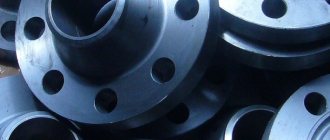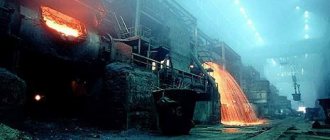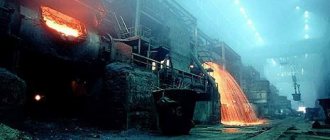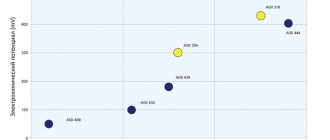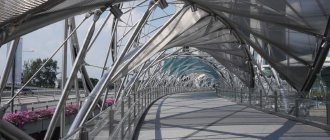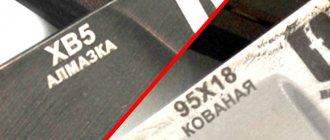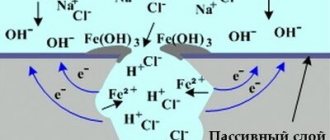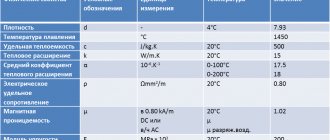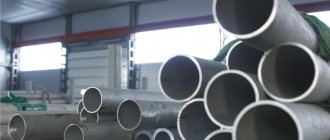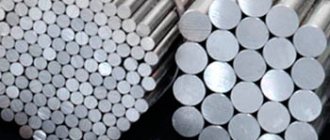Stainless steel AISI 316 in StenlisPro
StenlisPro supplies AISI 316 stainless steel sheets to the rolled metal market. The main characteristics of the products are as follows:
- Thickness: 0.5, 0.8, 4.0, 5.0 mm.
- Surfaces: matte or hot rolled.
- Size: 1000x2000 mm.
The sheets are characterized by plasticity and elasticity. The material does not require heat treatment after welding; it only needs to be cleaned of scale by chemical or mechanical means and passivated.
Selling AISI 316 stainless steel sheets, StenlisPro also provides services for cutting the material to size.
To clarify prices, standard sizes, types of additional services and other questions you may have, call: 8 (800) 333-06-56 or order a free call on the website. Our managers will contact you as soon as possible and help you place an order.
Chemical composition and decoding
Steel 360L belongs to the group of corrosion-resistant cryogenic steels. The adjective “cryogenic” indicates that the alloy increases its mechanical properties at lower temperatures. The chemical composition of steel is controlled by state standards of the United States of America and is as follows:
- Carbon (up to 0.03%) is the main hardener for steels. It is its content that regulates the balance between hardness and fragility. Carbon also affects weldability, making this process more difficult as it increases in composition. Specifically, in 316L, the strengthening agent is not fixed carbon, but iron chlorides. For this reason, to improve technological properties, the content of this element is reduced to a minimum.
- Manganese (up to 2.0%) is the main deoxidizer. It helps remove oxygen and sulfur from steel. Manganese has a positive effect on ductility, weldability and surface finish. It is an indispensable additive for almost steel alloys.
- Silicon (up to 1.0%) also belongs to the group of deoxidizers, like manganese. Its feature is an increase in the strength of steel without reducing the value of ductility. Silicon also reduces the likelihood of red brittleness, i.e., the appearance of cracks during hot pressure treatment.
- Chromium (16.0 -18.0%) is added to steel to increase corrosion and heat resistance characteristics. In addition, it enhances the effect of heat treatment and resistance to abrasive wear.
- Molybdenum (up to 2.0-3.0%). The main purpose of this element in steel is to increase heat resistance, as well as increase resistance to sea water.
- Nickel (10.0-14.0%) helps steel retain its strength characteristics at elevated temperatures. It also has a beneficial effect on its corrosion-resistant properties.
- Sulfur (up to 0.03%) and phosphorus (up to 0.05%) are classified as harmful impurities. Their presence significantly reduces the strength of the alloy. Also, a consequence of the increased content of sulfur and phosphorus is the tendency of steel to form cracks during hot working and deterioration of weldability.
Analogs
As mentioned earlier, this stainless steel is regulated by American standards, but it has a large number of world analogues:
- Russian equivalent - 03Х17Н14М3;
- Japan SCS16;
- Germany 1.4429;
- England 316S11.
Stainless steel AISI 316L analogue 03Х16Н15М3
For the manufacture of welded structures, the AISI 316 - 316L steel variety is most often used. It has a lower carbon content.
StenlisPro sells matte sheets of standard size 0.8x1000x2000. Thanks to the presence of:
- molybdenum – 2%;
- chromium – 17%;
- nickel – 10%;
the corrosion resistance of the alloy increases. Due to this, it is used in the manufacture of ventilation systems and chimneys in industries with the presence of aggressive environments.
Physical properties
AISI 3161 steel, due to the presence of molybdenum in its composition, can be used in conditions of exposure to sea water. A high degree of corrosion resistance is also achieved by increasing the chromium concentration. Let's call the main physical properties:
- Brinell hardness 165 HB.
- Density no more than 7.89 g/cm3.
- Ultimate strength or temporary tensile strength is 485 MPa.
- The relative elongation does not exceed 40%.
- Melting point more than 1440 degrees Celsius. Due to this, the material is able to withstand significant heat.
- The elastic modulus is 200 MPa.
Properties of AISI 316
Due to its special performance characteristics, stainless steel is widely used.
Areas of application of AISI 316
AISI 316 stainless steel is actively used in such industries as:
- Food and pharmaceutical industries - due to increased requirements for hygiene and quality standards.
- Construction (facades, roofs, fences, welded structures, various architectural elements).
- Chemical industry.
- Mechanical engineering.
- Pulp and paper industry.
- Mining business.
- Shipbuilding.
- Oil and gas industry (stainless steel pipes, tanks, etc.).
Heat resistance and strength make it possible to produce tools, household appliances, equipment, and parts for mechanical engineering on an industrial scale. Another leading characteristic - oxidation resistance - contributes to the widespread use of AISI 316 steel for the production of containers for storing or transporting aggressive chemicals, pipeline elements through which not only water, but also corrosive liquids and gases are transported.
Properties at low temperatures (316 AISI)
| Temperature, °C | Elasticity limit, (0.2%), Rp0.2 (proof of yield) N/mm2 | Ultimate strength (tensile), N/mm2 | Rp m | Impact strength, J |
| -78 | 820 | 400 | 180 | |
| -161 | 1150 | 460 | 165 | |
| -196 | 1300 | 580 | 155 | |
Corrosion resistance
Acidic environments
The table shows general values for the most common types of acids and solutions from them.
| Temperature, °C | Concentration, % by weight | Sulfuric acid | Formic acid | Phosphoric acid | Nitric acid |
| 80 | 10 | 2 | 0 | 0 | 0 |
| 20 | 2 | 0 | 0 | 0 | |
| 40 | 2 | 1 | 0 | 0 | |
| 60 | 2 | 1 | 0 | 0 | |
| 80 | 2 | 1 | 1 | 1 | |
| 100 | 2 | 0 | 2 | 2 | |
| 20 | 10 | 0 | 0 | 0 | 0 |
| 20 | 1 | 0 | 0 | 0 | |
| 40 | 2 | 0 | 0 | 0 | |
| 60 | 2 | 1 | 0 | 0 | |
| 80 | 1 | 1 | 1 | 0 | |
| 100 | 0 | 2 | 2 | 1 |
Code:
0 = high degree of protection (corrosion rate does not exceed 100 mm/year); 1 = partial protection (corrosion rate ranges from 100m to 1000 mm/year); 2 = non resistant – (corrosion rate exceeds 1000 mm/year).
Atmospheric influences
The table shows corrosion rates under atmospheric influences on AISI 316 stainless steel and other metals. The corrosion rate was calculated based on exposure to metals over a period of 10 years.
| Environment | Rural | Industrial marine | Marine | |
| Corrosion rate (mm/year) | 316 AISI | 0.0025 | 0.0051 | 0.0076 |
| carbon steel | 5.8 | 46.2 | 34.0 | |
| Aluminum-3S | 0.025 | 0.686 | 0.432 | |
Heat treatment
Annealing
Annealing of stainless steel is carried out at temperatures from +1010 to +1120 °C, after which a quick tempering in air or water is required. The best anti-corrosion properties of steel are achieved when firing is carried out at a temperature of +1070 °C and followed by instant cooling in water.
Vacation (stress relief)
Tempering of steel is carried out by heating to +200–400 °C, after which air cooling must be carried out.
Hot working (forging interval)
The initial temperature during hot processing should be about +1200 °C, and the final temperature should drop to +930–980 °C. After hot working, stainless steel must be annealed.
Characteristics of steel grade 316Ti / SS 316 Ti
| Standard | ASTM A182 - Standard Specification for Forged or Rolled Pipe Flanges, Forged Fittings, Valves, and Alloy and Stainless Steel Parts for High Temperature Service ASTM A240 - Standard Specification for Chrome- and Nickel-Chrome, Chrome- and Manganese-Nickel Stainless Steels for Plate, Sheet, and Strip for Pressure Vessels and General Applications ASTM A276 - Standard Specification for Fabricated, Unhot or Cold Processed Bars and Blooms, Other than Forged (Recycled) Bars ASTM A479 - Standard Specification for Stainless Steel Rods and Sections for Boilers and Other Pressure Vessels | ||||||
| Classification | Stainless steel | ||||||
| Application | Sheets, pipes, profiles | ||||||
| Other names | UNS | S31635 | |||||
| USA (ASTM A182) | Flanges and fittings | A182 Grade F316Ti | |||||
| USA (ASTM A240) | Flat rolled products | A240 Type 316Ti | |||||
| USA (ASTM A276) | Rods and profiles | A276 Type 316Ti | |||||
| USA (ASTM A478) | Wire | A478 316Ti | |||||
| USA (ASTM A479) | Rods and profiles | A479 316Ti | |||||
| USA (ASTM A480) | Plates, sheets, strips | A480 316Ti | |||||
AISI 316Ti steel is an austentic stainless steel. Basically, this is a version of AISI 316 steel with the addition of titanium. It is characterized by high resistance to sensitization over a long period of time at temperatures of 550 - 800°C. It is used where the main requirement is high corrosion resistance in conditions of increased aggressiveness.
AISI 316Ti steel
Class: ordinary corrosion-resistant steel.
Некоторые зарубежные аналоги: AISI 316H, S31635, X10CrNiMoNb18-12, X10CrNiMoTi18-12, SUS316Ti, Z6NDT17-12, 321S12, X6CrNiMoTi17-12-2, OCr18Ni12Mo2Ti, H18N10MT, 17348.
The offered steel does not contain surface defects (shrink holes, gas porosity, surface scratches, films, hairs), and also complies with domestic hygienic standards. The steel is marked in accordance with the international AISI , so it can be used to make export products.
Chemical composition of AISI 316Ti steel alloy
The presence of a large number of elements significantly expands the scope of steel, and also increases its quality characteristics.
The composition of the aisi 316 Ti alloy includes:
- Chrome (17%). Provides the formation of a special film that protects the alloy from corrosive processes.
- Nickel (13%). Makes steel more ductile, without loss of strength.
- Molybdenum (2%). Extends the service life of steel.
- Titanium (0.8%). Increases the strength of the alloy.
- Carbon (0.08%). Gives steel the necessary hardness and rigidity.
AISI 316 / 316l stainless steel standard
AISI 316 and related grade AISI 316L are structural cryogenic steel. Its composition is based on AISI 304, but with the addition of 2.5% molybdenum. Thanks to this, resistance to corrosion, heat and aggressive environments is noticeably increased. The alloy itself remains relatively inexpensive to produce, which explains its widespread use.
The analogue of the brand according to Gosstandart is 08Х17Н13М2.
Alloy Application
Steel of this grade is used to produce various products, one way or another intended to be inside an aggressive environment. This includes:
architectural structures; costume jewelry, including men's; piercing products; roofing elements; pumps, pipes; heat exchangers; coarse filters.
A separate area of use for AISI 316 and 316L steel is the manufacture of ship equipment and ship elements. It is important to note that the composition is most suitable for use in cold sea water.
Areas of industry where this steel composition is used:
mining, petrochemical, food, construction, pharmaceutical, pulp and paper.
Distinctive features
Among the characteristics that make AISI 316 alloy so popular are the following:
resists corrosion well in acidic environments; insensitive to cracking corrosion processes; Excellent welding and processing.
It can also be said about AISI 316L steel that it has excellent resistance to intergranular corrosion, even when welded.
The addition of molybdenum and nickel in a precise combination makes this alloy resistant to a wide variety of acidic environments. The only known oxidizing agent for AISI 316 and 316L is nitric acid: the alloy’s sensitivity to it is increased.
Compared to other alloys containing chromium and nickel, this composition better withstands the effects of sulfuric acid. At a temperature of 50 °C, the alloy can withstand a 5% concentration. More concentrated sulfuric acid has virtually no effect on this steel at temperatures up to 40 °C or above 60 °C.
The alloy of this grade resists the boiling of 20% phosphoric acid. Due to this, the products can withstand exposure to many aggressive environments.
Both related standards - AISI 316 and AISI 316L - are used where there is a high probability of intergranular corrosion processes. In this case, AISI 316L steel is used if welding is carried out. But we must remember that it is the alloy of this composition that loses strength more noticeably at temperatures above 425 °C.
Processing process
This steel is easy to weld; heat treatment after welding is not needed. Welds must be cleaned of scale and then passivated. Annealing is carried out at a temperature of 1025...1075 °C, after which the product is quickly cooled in an aqueous or air environment. Etching and passivation are then required. Etching is carried out with a solution containing 10% nitric acid and 2% hydrofluoric acid. Temperature: room temperature or 60°C. Another etching option is a solution containing 10% sulfuric acid and 0.5% nitric acid. Temperature: 60°C. Tempering is carried out at a temperature of 200...400 °C. For passivation, a 20–25% solution of nitric acid is used. Temperature: 20°C. Due to the elasticity and plasticity of the alloy, it can be formed by bending, drawing, using rotary drawing and other methods. The BaltInox plant produces stainless steel products and blanks from steel grades AISI 316, AISI 316L in strict accordance with standards.
